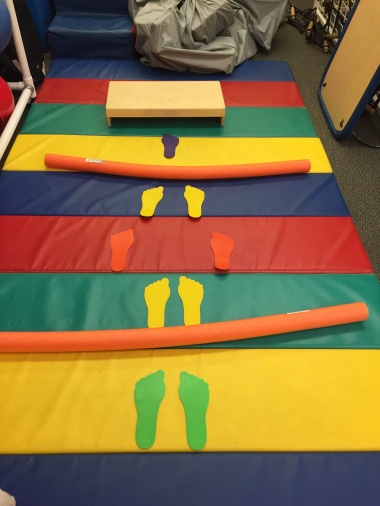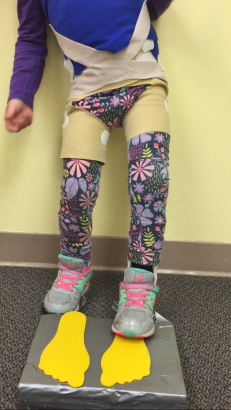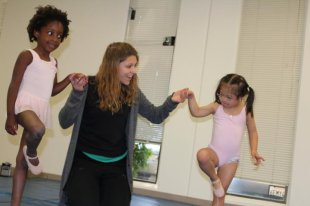
There are three main components that make up a person’s balance. These include: vision, somatosensation, and our vestibular system. These components need to work seamlessly together in order to allow both adults and children to maintain their balance in all different environments and scenarios.
Vision is pretty simple: what you’re able to see with your eyes allows you to keep your balance. You may notice that your young child needs to look down more frequently, especially in newer environments. Somatosensation is what we are able to feel, and particularly important for balance is what we are able to feel with our feet. This comes in handy for walking across uneven surfaces, such a grass or dirt. Our proprioceptive receptors are able to detect changes in terrain and accommodate accordingly. Finally, our vestibular system is what is located in our inner ear. This system allows us to detect changes in movement and motion, and accommodate accordingly.
If one component of balance is unavailable for use, the other two must compensate for this loss. Take vision for example: When you are walking at night or in the dark, your vision is at a disadvantage, and therefore, the vestibular and proprioceptive systems have to compensate for the corresponding loss of visual input. Many people, children included, may tend to over-rely on vision, particularly if the other two components aren’t functioning properly. It is therefore essential to ensure that all three components are contributing to one’s balance.
An example of the development of the somatosensory component is evident in young children when they are first learning to stand. You may remember your child rocking back and forth from their feet to their heels. This allows the child to gain knowledge of their limits of stability, and is also providing essential somatosensory input. They will learn to associate the feeling of being too far on their toes with a loss of balance, as well as going too far back on their heels. This discovery play is essential for all children, and helps to develop a sense of what appropriate balance feels like!
The vestibular system becomes essential for maintaining balance during movement. The development of this system can be enhanced by encouraging your growing child to participate in activities that involve movement—such as swinging, jumping, and playing catch!
It is essential to encourage kids to explore and discover their balance! Some activities that encourage balance development include: standing on one foot, walking along narrow surfaces (such as along curbs), jumping off higher surfaces, standing with their eyes closed, and walking along uneven or unsteady surfaces (such as grass or tan bark or over pillows at home).
Here are some older blog posts that address activities that can work on balance!

















